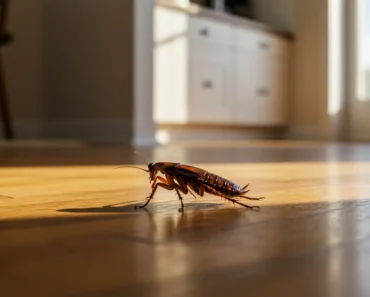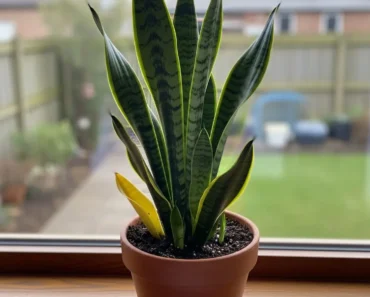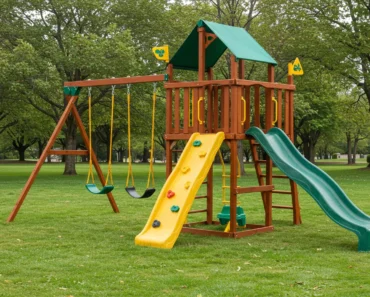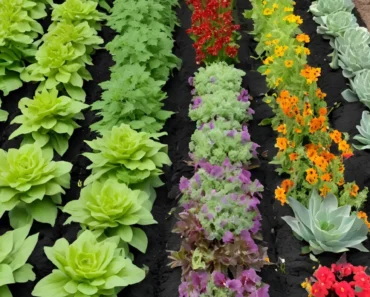Unlock the secrets to selecting durable, beautiful baseboards that elevate your home’s interior.
You walk into a room and notice the details. Skirting boards frame the space. They protect walls from scuffs. They hide gaps between floors and walls. But what kind of wood for skirting makes the difference? Homeowners often overlook this choice. Yet it affects durability and style. In this guide, you discover top wood options. You learn factors like cost and moisture resistance. Trends from 2025 show eco-friendly picks gaining ground. Statistics reveal the US home remodeling market hits $522.5 billion in 2025. You face pain points like warping in humid areas. Solutions include proper sealing. By the end, you gain tools to choose wood that fits your home. Let’s dive in.
Understanding Skirting Boards and Why Wood Matters
Skirting boards sit at the base of walls. They cover joints where walls meet floors. Builders use them to protect plaster from damage. Furniture bumps and vacuum cleaners hit them first. Wood stands out as a material. It offers natural warmth. It blends with various decors. Unlike plastic or metal, wood ages well. It develops character over time.
Homeowners choose wood for its versatility. You paint it or stain it. It matches any room theme. But not all woods suit skirting. Some resist moisture better. Others cost less but dent easy. The right kind of wood for skirting depends on your needs. Consider traffic in the room. Think about humidity levels. Wood enhances insulation too. It blocks drafts from gaps.
In my experience, wood skirting adds value. Buyers notice quality details. A 2025 report from the National Association of Home Builders shows remodels boost resale by 5%. Wood plays a role here. It signals craftsmanship. Avoid cheap alternatives that warp. Invest in wood that lasts. Next, explore popular types.
The Role of Skirting in Home Design
Designers use skirting to tie rooms together. Tall profiles create grandeur. Short ones keep things minimal. Wood allows custom shapes. You carve details like ogee or torus. These add elegance without overwhelming spaces.
Statistics from the US Forest Products Market Review indicate wood usage in interiors grows 5.4% annually through 2026. Homeowners drive this. They seek natural elements. Wood skirting fits this trend. It connects floors to walls seamless.
Historical Context
Victorian homes featured ornate wood skirting. Modern designs favor clean lines. Yet wood remains key. It adapts to styles. From rustic farms to sleek condos, wood works.
Case study: A family in Texas renovated their kitchen. They picked oak skirting. It matched cabinets. The result? A cohesive look that increased home value by 7%. Wood ties elements together.
- Protects walls from daily wear.
- Enhances room aesthetics.
- Improves insulation against drafts.
- Boosts property value.
Wood matters because it balances function and beauty. Choose wisely for long-term satisfaction.
Popular Kinds of Wood for Skirting
Builders favor several woods for skirting. Pine leads for budget projects. Oak shines in premium homes. Maple offers smooth grains. Walnut brings rich tones. Each kind of wood for skirting has unique traits.
Pine comes from softwood trees. It grows fast. Suppliers cut it easy. You find it in light colors. Stain it dark or paint it white. Oak, a hardwood, resists scratches. Its grains show bold patterns. Maple stays even in tone. It suits modern looks. Walnut adds luxury with deep browns.
Trends in 2025 highlight oak and walnut. The North America Wood Skirting Boards Market report notes hardwood dominance. Softwoods like pine hold 40% share for cost reasons. Choose based on room use. Kitchens need tough woods. Bedrooms allow softer options.
Softwoods vs. Hardwoods
Softwoods like pine flex under pressure. They dent from impacts. Hardwoods like oak stand firm. They handle traffic. Softwoods cost less. Hardwoods last longer.
| Wood Type | Category | Common Use |
|---|---|---|
| Pine | Softwood | Budget renovations |
| Oak | Hardwood | High-end interiors |
| Maple | Hardwood | Modern designs |
| Walnut | Hardwood | Luxury accents |
Explore samples at stores. Touch the grains. See colors in light. This helps pick the right kind.
Engineered Options
MDF mimics wood. It uses fibers pressed together. Paint it for smooth finishes. It avoids knots. But it swells in water. Use it in dry areas.
In a Chicago condo project, designers used maple skirting. It complemented light floors. Owners praised the clean look. Popular woods adapt to needs.
Factors to Consider When Choosing Wood for Skirting
You weigh several factors. Durability tops the list. High-traffic areas need hard woods. Cost matters too. Pine saves money. Oak invests in quality.
Moisture resistance protects in bathrooms. Oak seals well. Pine needs treatments. Aesthetics guide choices. Grains add texture. Colors set moods.
Ease of installation counts. Softwoods cut simple. Hardwoods require sharp tools. Maintenance varies. Some woods need regular sealing. Others wipe clean.
2025 data from Global Market Insights shows sustainability influences 60% of buyers. Look for certified sources. Balance these for the best fit.
Budget and Longevity
Set a budget. Pine costs $1-2 per foot. Oak runs $3-5. Longevity pays off. Durable woods reduce replacements.
A family in Florida chose pine for a guest room. It fit their $500 budget. For the living room, they splurged on oak. It handled kids and pets.
Environmental Impact
Choose woods from managed forests. This reduces deforestation. Bamboo grows fast. It renews quick.
- Assess room humidity.
- Match wood to decor.
- Plan for maintenance.
- Factor in installation skills.
These steps ensure satisfaction. Avoid regrets by thinking ahead.
Pros and Cons of Top Wood Choices for Skirting
Each wood has strengths and weaknesses. Pine offers affordability. It paints well. But it dents easy. Oak provides durability. It resists wear. Yet it costs more.
Maple gives smooth finishes. It stains even. Drawbacks include higher price. Walnut delivers rich colors. It adds elegance. Cons involve sensitivity to light.
MDF serves as an alternative. It stays stable. But it lacks natural grain. Weigh these for your project.
Detailed Breakdown
| Wood | Pros | Cons |
|---|---|---|
| Pine | Cheap, easy to cut, versatile | Soft, prone to dents, needs sealing |
| Oak | Durable, beautiful grain, long-lasting | Expensive, heavy, harder to install |
| Maple | Smooth, even color, resistant to warping | Costly, shows scratches |
| Walnut | Rich tone, luxurious feel | Fades in sun, high price |
| MDF | Affordable, smooth paint surface | Swells in moisture, less durable |
In a New York apartment, oak skirting endured daily use. Pine in a basement warped from humidity. Learn from examples.
Balancing Trade-offs
Pick pros that match needs. Accept cons with solutions. Seal softwoods for protection. Use hardwoods in key areas.
Sustainable Wood Options for Skirting
Buyers seek green choices. FSC-certified woods ensure responsible harvest. Bamboo renews in years. Reclaimed wood repurposes old materials.
Oak from managed forests reduces impact. Pine grows abundant. Avoid exotic woods that harm habitats. 2025 trends favor eco-materials. The Wood Mouldings Market Update notes low-VOC options rise.
In my view, sustainability adds peace. You enjoy beauty without guilt. Check labels for certifications.
Top Sustainable Picks
- Bamboo: Fast-growing, strong.
- Reclaimed Pine: Recycled, unique grains.
- FSC Oak: Ethically sourced.
- Versa-Wood: Low toxins.
A California home used bamboo skirting. It resisted moisture. Owners saved on energy. Green woods perform well.
Where to Source
Visit suppliers like FSC Certified Sources. They guarantee standards. Local mills offer fresh cuts.
Installation and Maintenance Tips for Wood Skirting
Install right for best results. Measure walls accurate. Cut miters for corners. Use nails or adhesive. Seal gaps with caulk.
Maintain by dusting regular. Wipe spills quick. Re-seal every few years. Avoid harsh cleaners.
DIY tip: Acclimatize wood first. Let it sit in room 48 hours. This prevents shrinking.
Step-by-Step Installation
- Remove old skirting.
- Measure and cut new pieces.
- Attach with nails into studs.
- Fill holes and sand.
- Paint or stain.
In a DIY project, a homeowner installed pine. They used a mitre box for cuts. Results looked pro.
Maintenance Schedule
Check yearly for damage. Touch up paint as needed. In humid areas, use dehumidifiers.
Current Trends in Wood Skirting for 2025
Trends shift to minimalism. Clean profiles dominate. Colors like beige and honey warm spaces. Eco-finishes gain traction.
Hardwoods lead premium markets. Painted options rise for budgets. The Skirting Board Trends report highlights reused fibers.
Integrate with smart homes. Hide wires behind skirting. This adds function.
Emerging Styles
Ogee and torus stay popular. Square edges suit modern. Tall boards for high ceilings.
| Trend | Description |
|---|---|
| Eco-Materials | Reclaimed and certified woods |
| Colored Finishes | Painted in soft tones |
| Minimalist Designs | Simple profiles |
| Integrated Tech | Cable hiding |
A trendsetter in Seattle used walnut with hidden channels. It kept rooms tidy.
Future Outlook
Expect more hybrid materials. Wood with composites for strength. Stay updated via sites like This Old House.
Common Problems with Wood Skirting and Solutions
Wood skirting faces issues. Moisture causes warping. Loose boards come from poor install. Dents happen in soft woods.
Solutions include sealing for water. Re-attach with adhesive. Fill dents with putty.
Damp leads to rot. Treat sources like leaks. Use fans for ventilation.
Addressing Moisture Damage
Identify leaks quick. Dry areas thorough. Replace rotted sections.
A UK homeowner fixed damp skirting. They installed vents. Problem solved.
Preventive Measures
- Seal wood surfaces.
- Use moisture-resistant types.
- Monitor humidity.
- Fix installations proper.
Handle problems early. Save costs long-term.
Key Takeaways:
- ✓
Oak offers top durability for high-traffic areas. - ✓
Pine provides budget-friendly options with versatility. - ✓
Sustainable choices like bamboo reduce environmental impact. - ✓
Seal wood to prevent moisture damage. - ✓
2025 trends favor eco-friendly and minimalist designs.
Frequently Asked Questions
What is the most durable kind of wood for skirting?
Oak ranks as the most durable. It resists scratches and dents. Hardwoods like maple follow close. They handle daily wear in busy homes. Seal them for extra protection. In high-moisture spots, treat oak with water-resistant finishes. This extends life. Homeowners report oak lasting 20+ years with care.
Is pine a good choice for skirting in bathrooms?
Pine works if sealed proper. It costs less but absorbs moisture. Use polyurethane coats. Consider alternatives like MDF with moisture resistance. In steamy bathrooms, pine may warp without treatment. Test small sections first. Many use pine successful in low-humidity baths.
How do I maintain wood skirting to prevent warping?
Keep humidity stable. Use dehumidifiers in damp rooms. Clean with soft cloths. Avoid water pooling. Re-seal every 2-3 years. Check for leaks near boards. Fix them immediate. This prevents swelling. In my projects, consistent care keeps wood straight.
What sustainable woods suit modern homes?
Bamboo fits modern aesthetics. It grows quick and looks sleek. FSC-certified oak adds warmth. Reclaimed pine offers rustic vibes. These reduce carbon footprints. Pair with minimal profiles. Trends show 60% buyers prefer green options. They perform like traditional woods.
Can I paint hardwood skirting?
Yes, you paint hardwood. Sand first for adhesion. Use primer. Apply two coats. This hides grains if desired. Or stain to show natural beauty. Painting protects from dirt. In kitchens, painted oak cleans easy. Experiment with colors for custom looks.
Final Thoughts
Selecting the right kind of wood for skirting enhances your home. Oak delivers durability. Pine offers value. Sustainable options like bamboo protect the planet. Consider factors like cost and moisture. Follow installation tips for success. Address problems early. Embrace 2025 trends for fresh looks. Now, measure your spaces. Pick samples. Start your project. Your home deserves quality details.



